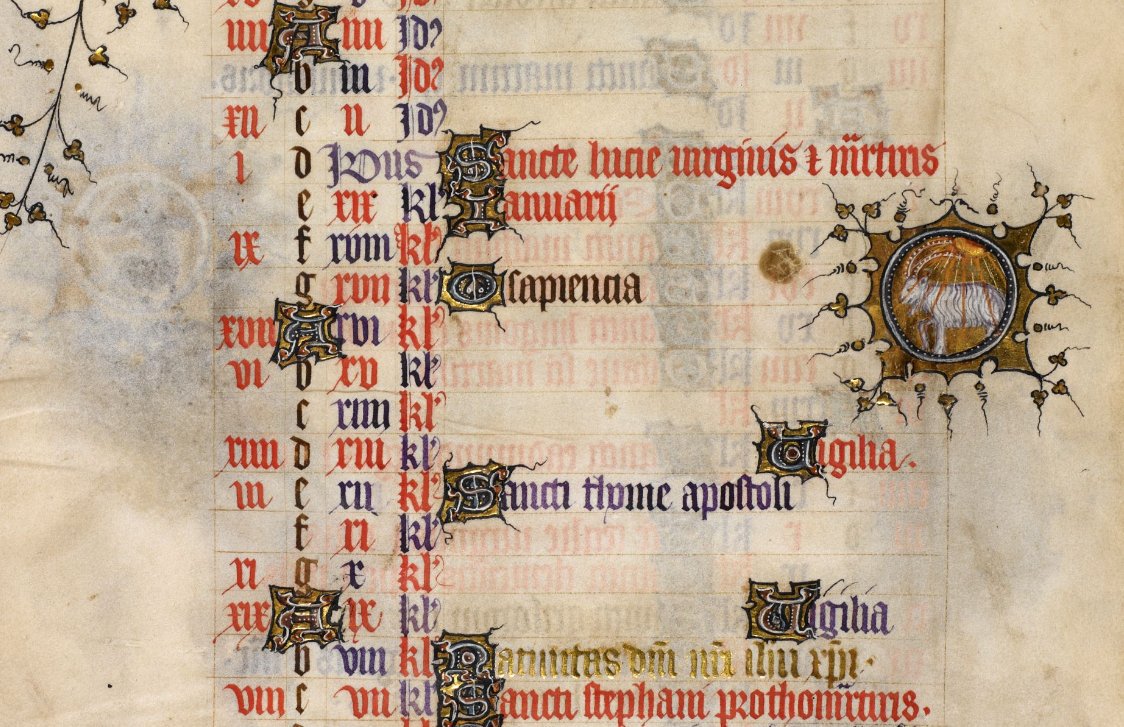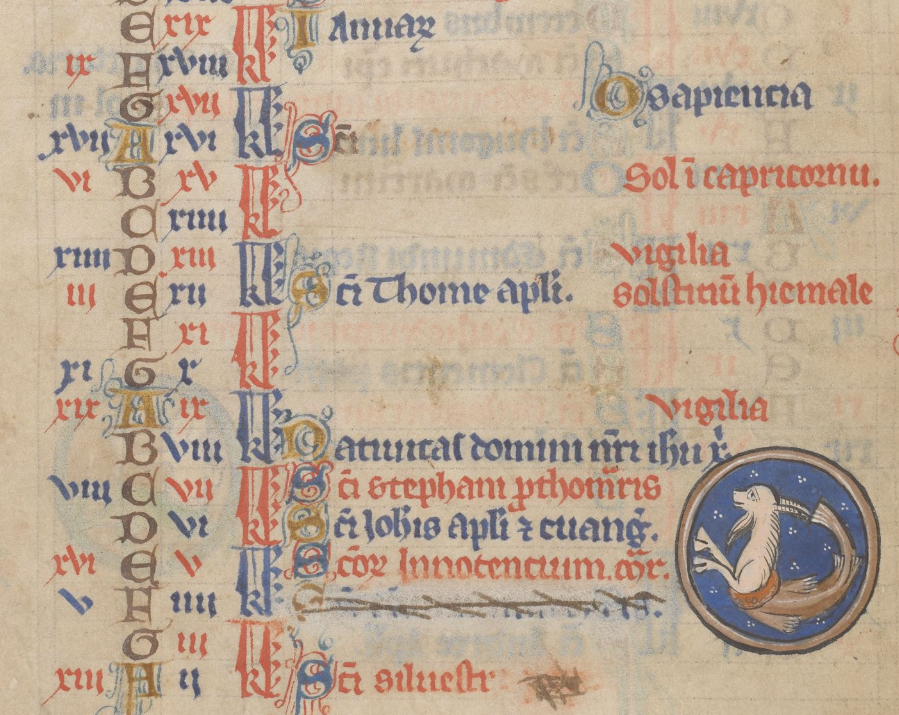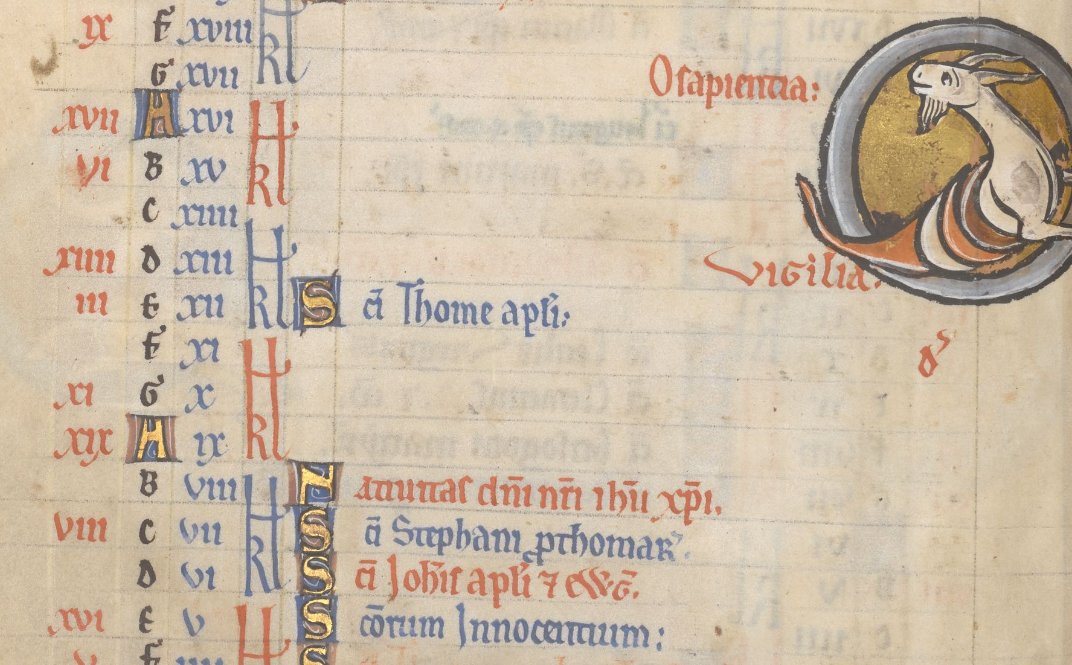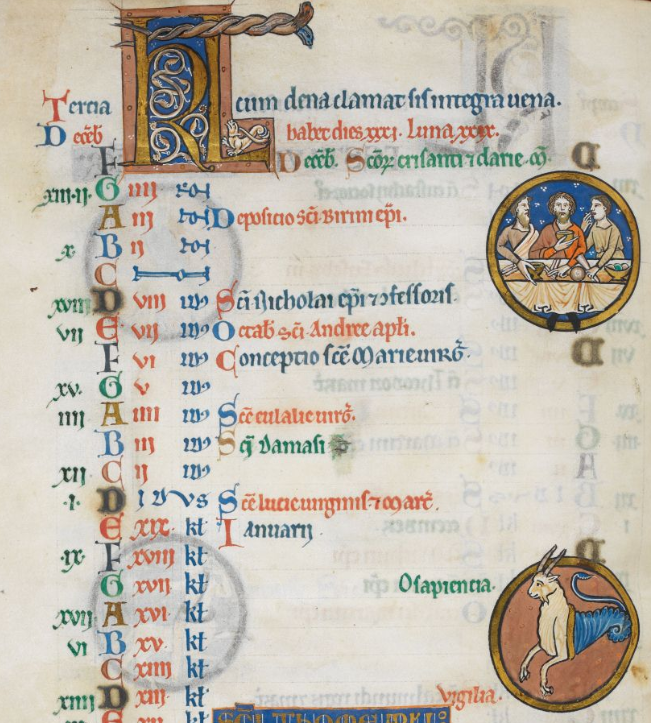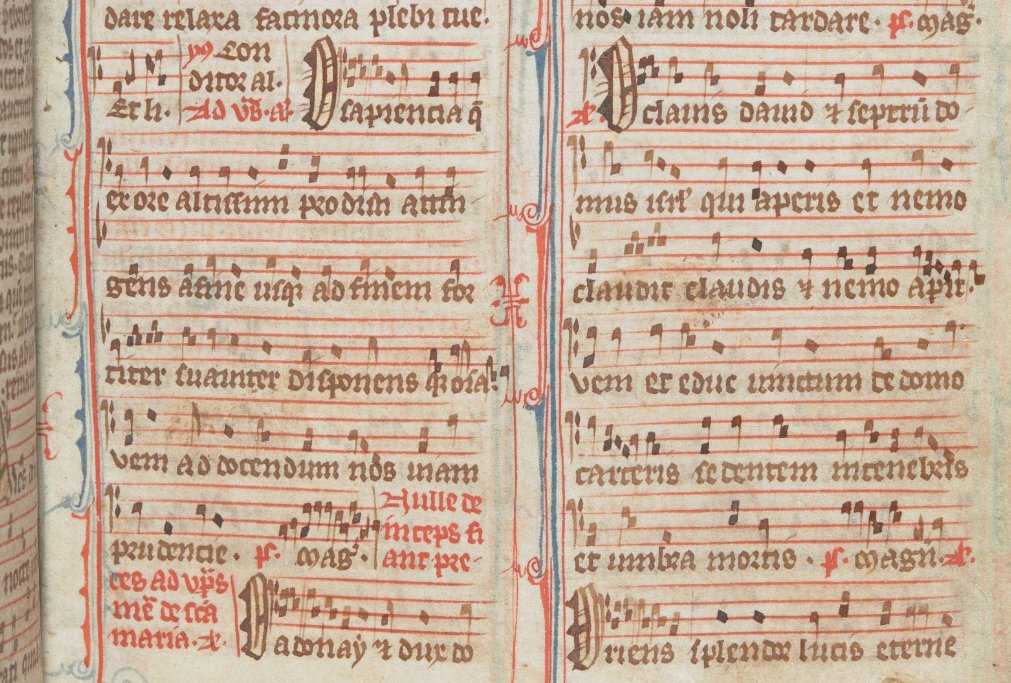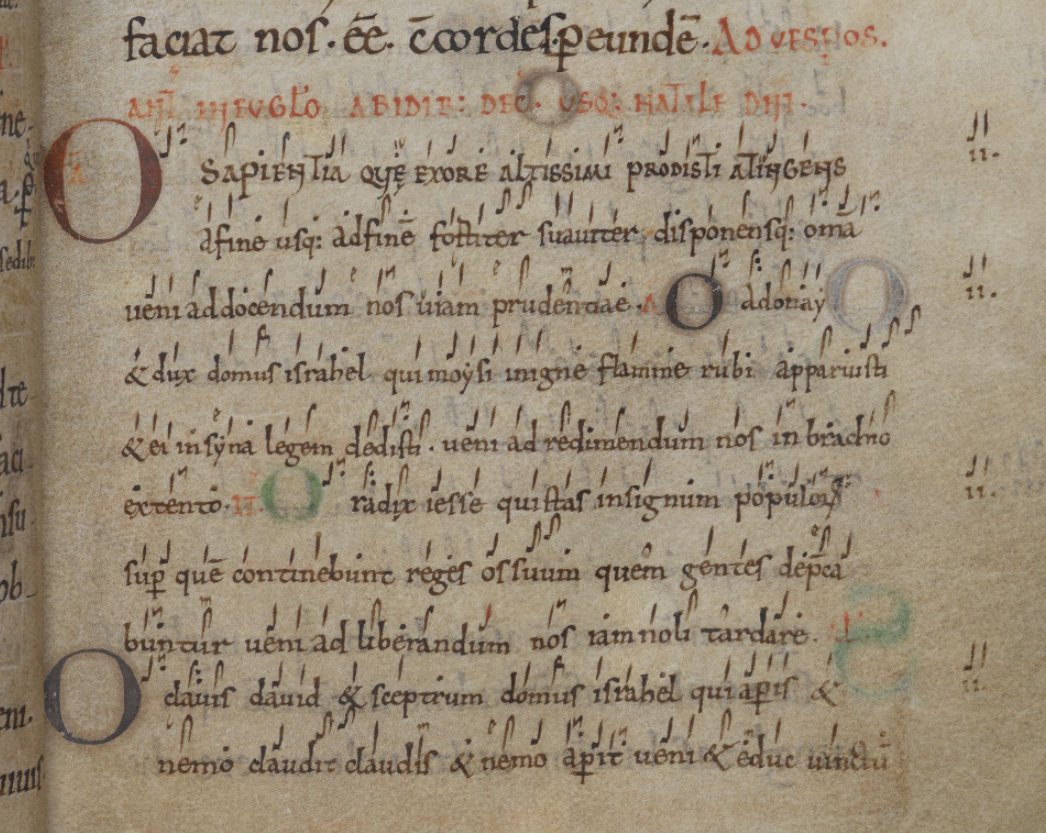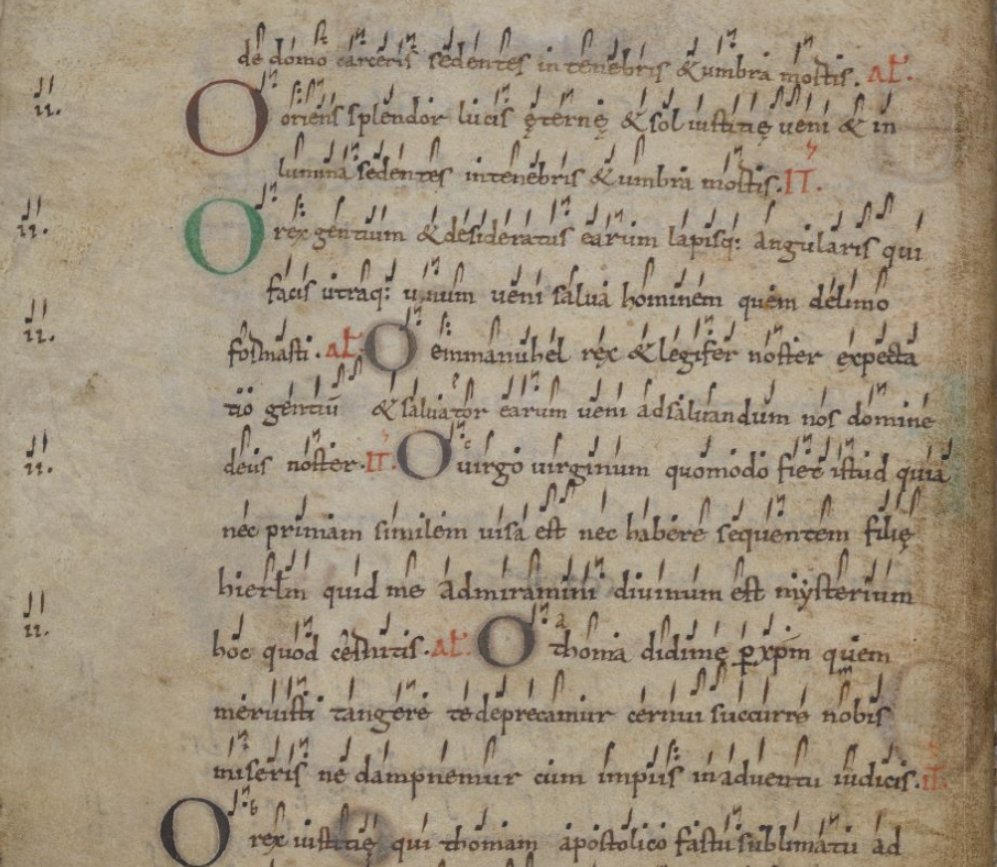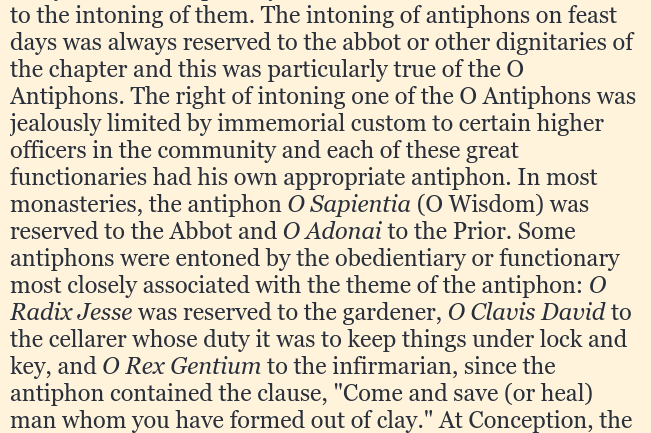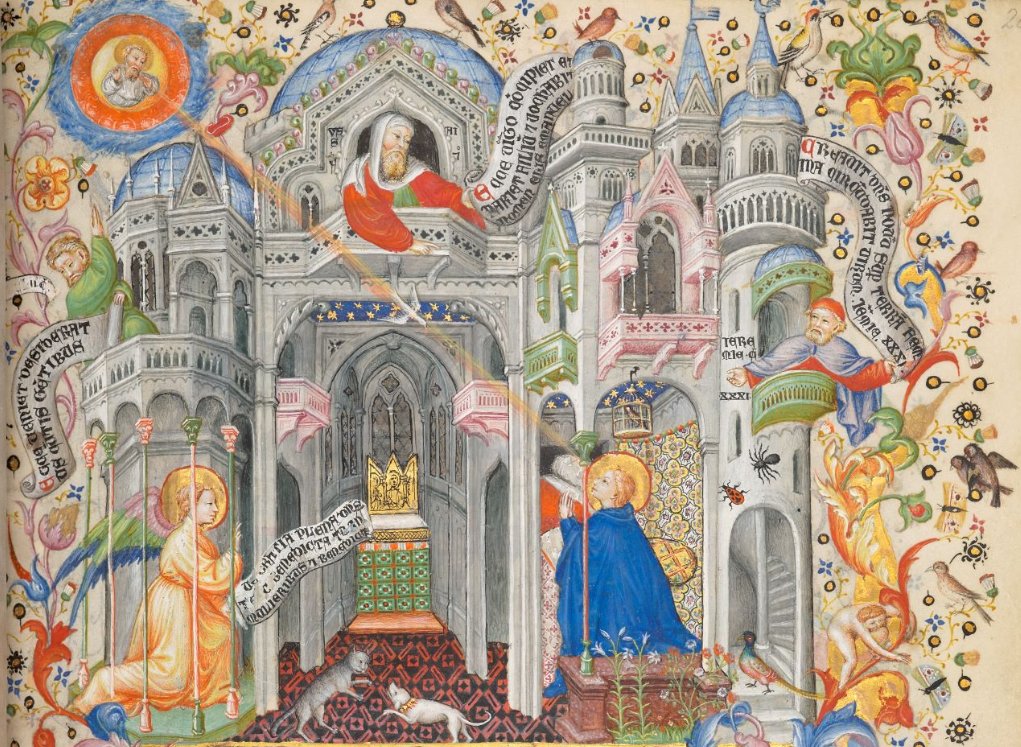The last week of Advent is the season of the O Antiphons. Sung at Vespers, in the early dusk of a midwinter evening, they are ancient songs of longing and desire in the darkest time of the year. https://aclerkofoxford.blogspot.com/2014/12/the-o-antiphons-in-middle-english-to-e.html
The start of the O Antiphons, beginning with 'O Sapientia', is often marked in medieval calendars for December (usually next to some version of a goat, symbolising Capricorn...). It's a sign that Christmas is coming closer.
(BL Add. 38116, Lansdowne 420, Royal 1 D X)
(BL Add. 38116, Lansdowne 420, Royal 1 D X)
A 14th-century translation of 'O Sapientia':
Thou wysdom that crepedest out of Godes mouthe,
That rechest fram est to west, fram north to south,
That alle thynges madest throw thy myght,
Come to tech us the wey of flyght.
(Image: the O Antiphons, http://bl.uk/manuscripts/Viewer.aspx?ref=add_ms_52359_fs001r f. 27)
Thou wysdom that crepedest out of Godes mouthe,
That rechest fram est to west, fram north to south,
That alle thynges madest throw thy myght,
Come to tech us the wey of flyght.
(Image: the O Antiphons, http://bl.uk/manuscripts/Viewer.aspx?ref=add_ms_52359_fs001r f. 27)
The O Antiphons of Advent in an Anglo-Saxon manuscript, the Leofric Collectar ( http://www.bl.uk/manuscripts/FullDisplay.aspx?ref=Harley_MS_2961 ff.10-10v). These antiphons were already hundreds of years old by the time this manuscript was made in the 11th century, and they'd been known in England since the 8th century.
This is a lovely detail about how the O Antiphons were used in medieval monasteries - linking the central image of each antiphon to the daily work of different members of the community.
(from https://onceiwasacleverboy.blogspot.com/2011/12/o-antiphons.html)
(from https://onceiwasacleverboy.blogspot.com/2011/12/o-antiphons.html)
'O orient light shining most bright,
O son of right, adown thou light...
O Jesse root, most sweet and sote,
In rind and root most full of bote...'
A 15th-century carol which echoes the O Antiphons: https://aclerkofoxford.blogspot.com/2019/12/an-advent-carol-o-orient-light.html
O son of right, adown thou light...
O Jesse root, most sweet and sote,
In rind and root most full of bote...'
A 15th-century carol which echoes the O Antiphons: https://aclerkofoxford.blogspot.com/2019/12/an-advent-carol-o-orient-light.html

 Read on Twitter
Read on Twitter